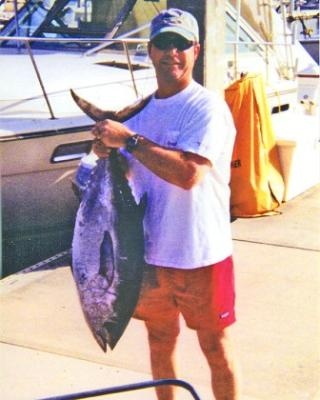Wassaw Sound Fishing Spot
- Last Modified By: vinny60 on 09/28/09 03:47 PM
- Ask about Wassaw Sound in our Fishing Forums
Photos
Fish Species
Wassaw Sound Description
Wassaw Sound is a bay of the Atlantic Ocean on the coast of Georgia, United States into which the Wilmington River flows. During the spring and summer, most inshore species will be found along the edges of the sounds, beaches and inlets. Try and locate bait. Look around the shallows of small islands and guts that drain the marsh. Trout will move into these areas and often congregate for entire tidal stages. Also look for bends in creeks that flow past shell mounds or points with sand or shelly bottoms. Most of these places will be productive during the last three hours of ebb, and first three hours of the flood tide. Fish along places where small rips form or where the water flows from a point. Trout will often be out away from the "structure" in 6-8 ft. of water, whereas red drum and flounder tend to be up close to the shells in less than 2 ft. of water. Adjust your fishing depth and try different locations until you get a strike. When a strike occurs, fix that spot in your mind, and cast right back in the same location. Trout are a tight schooling species and many times bite only in a very small zone. When fishing around marsh islands and points try high flood and high ebb tide stages. Rips will be easier to find during these periods. During high tide, try fishing directly over submerged shell mounds and off the tips of marsh islands. During dead low tide, take a break, eat a sandwich and wait for the water to begin moving again. During the early fall, fish will still be found in the sounds and lower reaches of coastal rivers. After a few hard northeasters in late October and November, fish begin moving up the creeks and rivers. The fish will be in deeper holes and are slower to bite in the colder weather. This is a good time to try trolling grubs slowly along the banks in 10 to 15 ft. of water, zig-zagging back and forth into 5 ft. once in a while, especially on the higher tide stages. Troll slow enough so the grub bumps the bottom once or twice per minuet. A good tip is to check the stomach contents of any fish you catch and if possible, make the adjustment to your bait or lure accordingly The main offshore season in Georgia begins in mid-April when large schools of bluefish, Spanish mackerel, cobia, king mackerel, bait fish, and many other species begin their northern migration. Trolling around and over the live bottom areas, artificial reefs, and past Navy towers works well. Look for water temperature over 60 degrees F. Remember, many fish, or the bait they eat, are often located around structure. Therefore, fish around floating debris, weed lines, tide rips, and bottom reliefs. Also, watch those birds. Many times fish are caught where sea-birds are feeding. The birds feed on bait that is being pushed to the surface by predators. Offshore fishing generally gets better as the summer progresses, and good weather allows one to venture farther from shore, even to the western edge of the Gulf Stream (about 60 to 80 miles). Out in this "green" water you are liable to hook into tunas, bill fish, sailfish, wahoo, and dolphin. These species tend to be present year-round, but the distance offshore and poor weather conditions in the fall and winter prevents most of us from catching them. Summertime fishing on and around the forty-mile live bottom areas (Savannah, Grand, & Brunswick Snapper Banks) is excellent for bottom fish such as snapper and grouper, as well as for kings, barracuda, cobia, and big amberjack. The Navy towers are good too. Look for schools of bait on the down-current side and either troll along them or live-line a pinfish, greenie, pogy, mullet, or other live bait along the edges of the towers. Late June through early September is also very good nearshore for small sharks, tarpon, smoker kings (the big ones), schools of Spanish, and an occasional cobia. Fishing methods vary from drifting dead pogies on the bottom or anchoring and creating a chum-line with ground pogies and/or pogy oil and fishing both dead and live bait in the chum-line. Also, slow trolling is very productive too, especially along tide rips that form near shipping channels and inlets. As the Fall and Winter approaches and the migratory species have moved through heading south, bottom fishing picks up. Excellent sea bass, vermillion snapper, red snapper, scamp grouper, gag grouper, triggerfish, pink porgy, and white porgy can be caught bottom fishing with squid, cut bait or live bait.
Wassaw Sound is a bay of the Atlantic Ocean on the coast of Georgia, United States into which the Wilmington River flows.
